Wakehurst: Kew Gardens’ meadow-filled outpost with art &
insects
London’s Kew Gardens has a second site in the historic Sussex
High Weald landscape, Wakehurst. It is open to the public and this summer celebrates meadows
with landscape & artistic projects. Four playful projects are spread across
a carefully managed landscape which not only offers beautiful setting but is
important for international horticultural sciences.
Everybody interested in architecture and landscape has heard
of Kew Gardens, its celebrated glass houses, pavilions, and world-famous horticultural
collection. Kew has a sibling in Wakehurst in the Sussex High Weald landscapes,
an ancient setting for a publicly accessible centre of gardens, temperate
woodlands, wetlands, and meadows. It is also home to the Millennium Seed Bank, a
series of sustainably-designed arched spaces by Stanton Williams architects,
concealing a vast research centre of laboratories and preservation spaces as
well as sub-zero basement storage for over 2.5 billion seeds from around the
world.
The history of Wakehurst
While there is archaeological evidence on the site of human occupation from prehistoric to Bronze Age periods, the site as it sits today has developed since 1590 when Edward Culpeper, of the family who had married into the Wakehurst lineage who had owned the land in the area since 1205, constructed an Elizabethan mansion which over the 17th century was accompanied by walled gardens, orchards, and new planting.
By the 18th century, having been sold to another family, the estate had stretched to 3,400 acres and passed through various new owners who took care of not only the house, still central to Wakehurst today, but developed the landscapes as spaces of recreation, horticultural celebration, spectacle, and the early stages of collecting and conservation of plants.
While there is archaeological evidence on the site of human occupation from prehistoric to Bronze Age periods, the site as it sits today has developed since 1590 when Edward Culpeper, of the family who had married into the Wakehurst lineage who had owned the land in the area since 1205, constructed an Elizabethan mansion which over the 17th century was accompanied by walled gardens, orchards, and new planting.
By the 18th century, having been sold to another family, the estate had stretched to 3,400 acres and passed through various new owners who took care of not only the house, still central to Wakehurst today, but developed the landscapes as spaces of recreation, horticultural celebration, spectacle, and the early stages of collecting and conservation of plants.



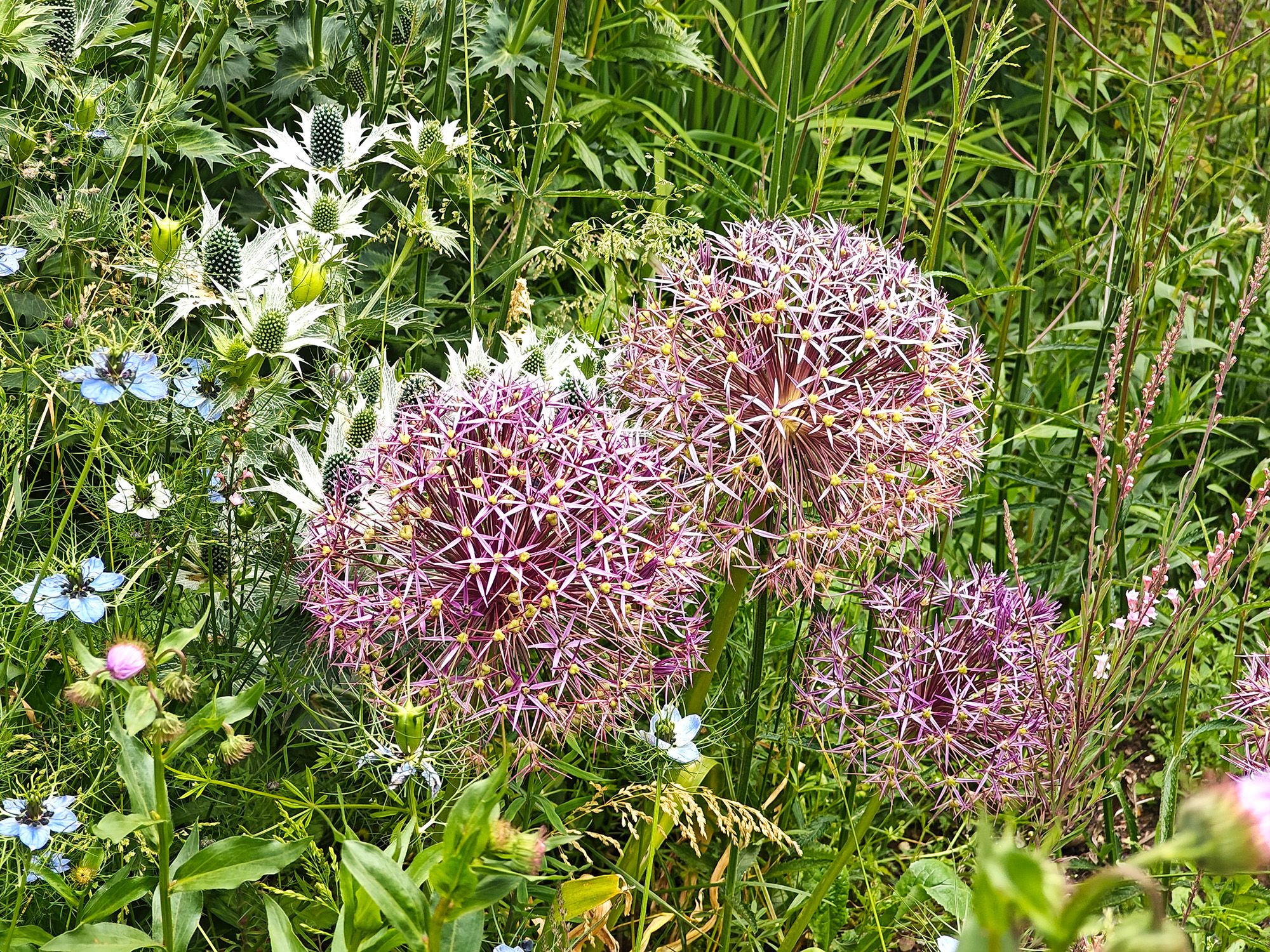
Figs.i-iv




FIgs.v-viii
Scientific meadows
Requisitioned for the World War II efforts, in the 1960s the National Trust took ownership who then entrusted the site to the Royal Botanic Gardens, Kew. Since, the site has become a national and global centre for horticultural and scientific innovation, and is still expanding its offer.
This summer, South Park ancient parkland opens to visitors for the first time. Wakehurst’s horticultural team will be adding wildflower species to the 40 acre site, supported by summer hay cutting and winter grazing. The landscape team have also reconsidered Coronation Meadow, created in 2015 as part of a national push for new wildflower meadows. Where a meadow may traditionally have a single mowed pathway through it, here there is now an interlocking maze of paths, inviting the public to meander.
Requisitioned for the World War II efforts, in the 1960s the National Trust took ownership who then entrusted the site to the Royal Botanic Gardens, Kew. Since, the site has become a national and global centre for horticultural and scientific innovation, and is still expanding its offer.
This summer, South Park ancient parkland opens to visitors for the first time. Wakehurst’s horticultural team will be adding wildflower species to the 40 acre site, supported by summer hay cutting and winter grazing. The landscape team have also reconsidered Coronation Meadow, created in 2015 as part of a national push for new wildflower meadows. Where a meadow may traditionally have a single mowed pathway through it, here there is now an interlocking maze of paths, inviting the public to meander.
Meadows for all
Meadows are central to 2024 at Wakehurst, and also offer the theme for four artistic installations across the site. It is understood that Britain has lost 99% of its meadow land since the 1940s, and these projects are designed to bring awareness to the issue and celebrate Wakehurst’s work in restoration and research.
While meadows are man-made and conserved spaces, and are being lost due to intensive agricultural processes, they are home to all kinds of flora and fauna. Artists Heinrich & Palmer have created a film, In Visible Light, to explore the experience of one meadow inhabitant, the bumble bee. Housed within a container decorated in hexagonal patterns, the work shows us plants as bees see and explore them. Created in partnership with Wakehurst researcher Janine Griffiths-Lee, the experimental piece invites visitors to lose the shackles of human-centric looking, and consider meadows from a smaller, lower, and more exploratory perspective.
Meadows are central to 2024 at Wakehurst, and also offer the theme for four artistic installations across the site. It is understood that Britain has lost 99% of its meadow land since the 1940s, and these projects are designed to bring awareness to the issue and celebrate Wakehurst’s work in restoration and research.
While meadows are man-made and conserved spaces, and are being lost due to intensive agricultural processes, they are home to all kinds of flora and fauna. Artists Heinrich & Palmer have created a film, In Visible Light, to explore the experience of one meadow inhabitant, the bumble bee. Housed within a container decorated in hexagonal patterns, the work shows us plants as bees see and explore them. Created in partnership with Wakehurst researcher Janine Griffiths-Lee, the experimental piece invites visitors to lose the shackles of human-centric looking, and consider meadows from a smaller, lower, and more exploratory perspective.


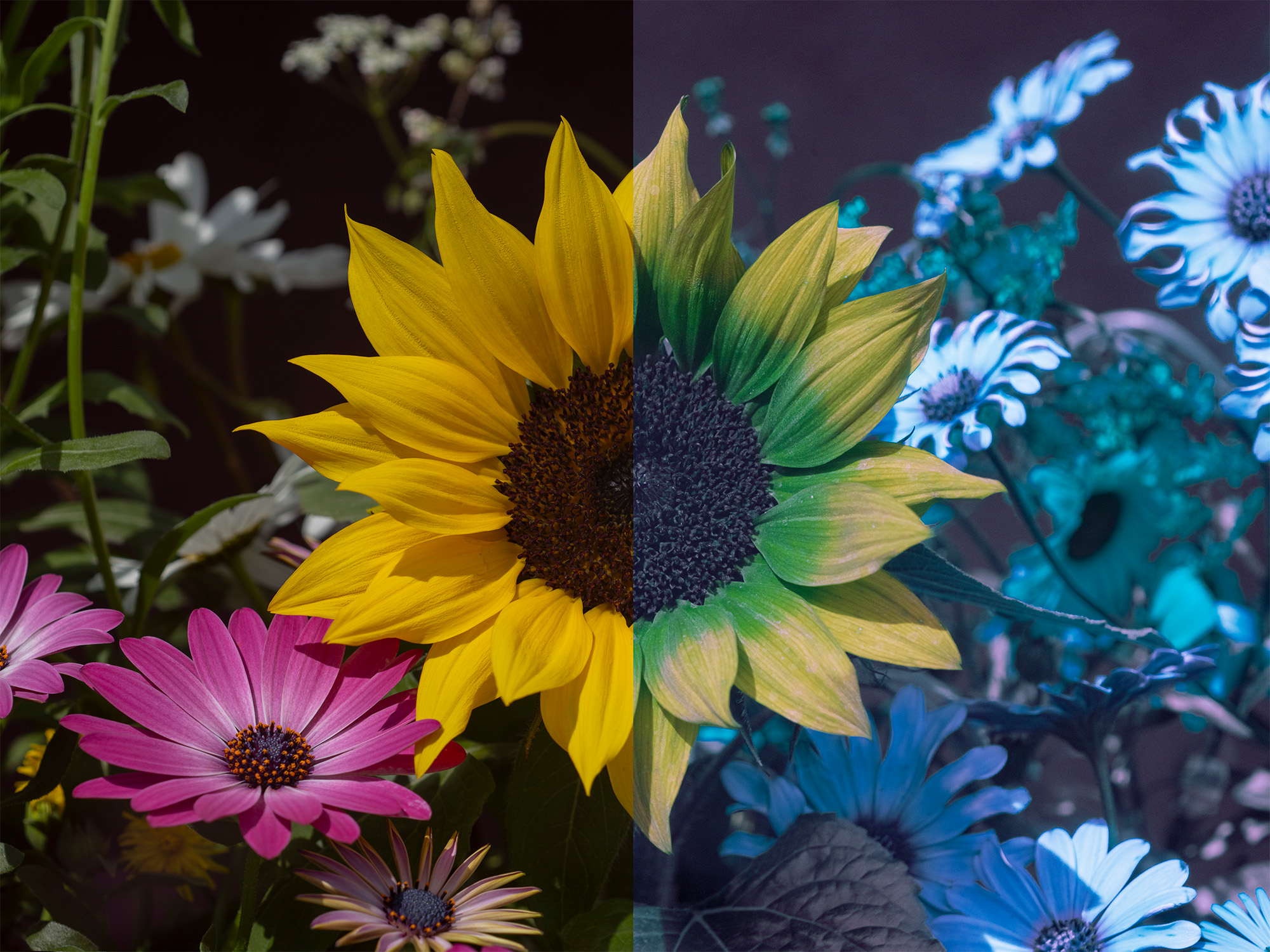
Figs. ix-xi




Figs.xii-xv
An architectural restoration
Wakehurst Mansion is currently undergoing compete renovation by Martin Ashley Architects. Visitors are encouraged to climb scaffolding steps to a gantry offering fascinating views in two directions: outside, across the pond and towards the horizon of the site; and inwards to observe the workers and conservation architects piece by piece restore the roof of the mansion.
While the works continue, the whole building has been wrapped in a 1550m² photomontage by Australian artist Catherine Nelson. Capturing images of trees and plants from across the site, Nelson playfully reconfigured the fragments into three large canvases that wrap the historic house. Planet Wakehurst reimagines the nature of Wakehurst as a globe, representing all the places from which trees and plants across the site originate, also throwing in aesthetic conversations around climate change and its impact upon flora and fauna.
Wakehurst Mansion is currently undergoing compete renovation by Martin Ashley Architects. Visitors are encouraged to climb scaffolding steps to a gantry offering fascinating views in two directions: outside, across the pond and towards the horizon of the site; and inwards to observe the workers and conservation architects piece by piece restore the roof of the mansion.
While the works continue, the whole building has been wrapped in a 1550m² photomontage by Australian artist Catherine Nelson. Capturing images of trees and plants from across the site, Nelson playfully reconfigured the fragments into three large canvases that wrap the historic house. Planet Wakehurst reimagines the nature of Wakehurst as a globe, representing all the places from which trees and plants across the site originate, also throwing in aesthetic conversations around climate change and its impact upon flora and fauna.
Speaking to the animals
Two of the four meadow-themed artistic responses can be found on lawns visible from the mansion viewing gallery. Tord Boontje is a designer working across products, furniture, and lighting. He has previously worked with craftspeople in Senegal, and here incorporates their weaving skills into his Wakehurst installation, Meadow Shadow. His bespoke tall chairs, are designed invite people to curl up into comfort while receiving shade from the overhang. The colours of the chairs are carefully chosen to match the colours of planting that attracts a greater diversity of pollinators, and wild flowers in these colours will spring up in beds surrounding the chairs over the summer months.
A short walk away is an oversized gramophone, strikingly placed in the centre of a wide lawn. It is a collaboration of three creatives: Annabel Ross, who runs the podcast series Messages from the Wild; Donnacha Cahill, an Irish sculptor who created the physical object; and sound artist and composer Alice Boyd. Using interviews and field recordings made on site, various animals speak their lives as imagined and voiced by Wakehurst horticulturalists and scientists. Creatures including a scissor bee, cinnabar moth, and meadow grasshopper speak with a human voice of their daily lives, fears, and relationship to the gardens.
Two of the four meadow-themed artistic responses can be found on lawns visible from the mansion viewing gallery. Tord Boontje is a designer working across products, furniture, and lighting. He has previously worked with craftspeople in Senegal, and here incorporates their weaving skills into his Wakehurst installation, Meadow Shadow. His bespoke tall chairs, are designed invite people to curl up into comfort while receiving shade from the overhang. The colours of the chairs are carefully chosen to match the colours of planting that attracts a greater diversity of pollinators, and wild flowers in these colours will spring up in beds surrounding the chairs over the summer months.
A short walk away is an oversized gramophone, strikingly placed in the centre of a wide lawn. It is a collaboration of three creatives: Annabel Ross, who runs the podcast series Messages from the Wild; Donnacha Cahill, an Irish sculptor who created the physical object; and sound artist and composer Alice Boyd. Using interviews and field recordings made on site, various animals speak their lives as imagined and voiced by Wakehurst horticulturalists and scientists. Creatures including a scissor bee, cinnabar moth, and meadow grasshopper speak with a human voice of their daily lives, fears, and relationship to the gardens.
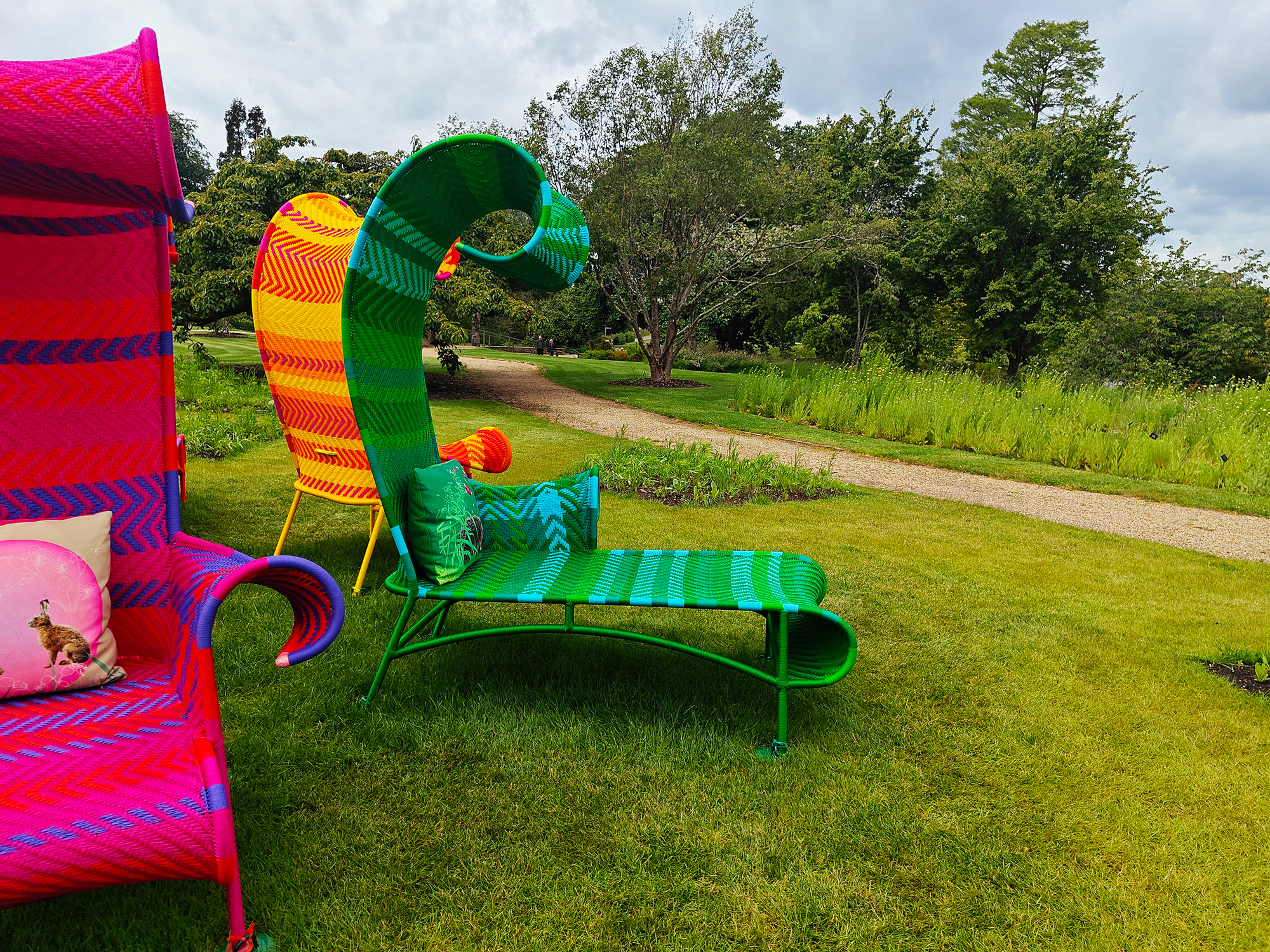




Figs.xvi-xix






Figs.xxi-xxv
Walled gardens of joy
The first records of a walled garden at Wakehurst date from 1626. There are still smaller-scale gardens and areas to explore surrounding the mansion, including the Winter Garden and botanical Walled Garden. An intimate space crowded with colour and flower, it is planted for not only visual discovery but also with a scent of exotic shrubs. Here, there is also an edible meadow highlighting some of the 7000+ species of plant that are edible to humans. The edible meadow is harvested over summer and autumn, created in partnership with ecological horticulturalist Sid Hill.
Horticulturalists of the future are also catered for with a kids’ garden and mud kitchen. A setup with pots, pans, a wooden faux-oven and – importantly – sinks, it’s a place where children can explore plants, seeds, and mud in their own way.
The first records of a walled garden at Wakehurst date from 1626. There are still smaller-scale gardens and areas to explore surrounding the mansion, including the Winter Garden and botanical Walled Garden. An intimate space crowded with colour and flower, it is planted for not only visual discovery but also with a scent of exotic shrubs. Here, there is also an edible meadow highlighting some of the 7000+ species of plant that are edible to humans. The edible meadow is harvested over summer and autumn, created in partnership with ecological horticulturalist Sid Hill.
Horticulturalists of the future are also catered for with a kids’ garden and mud kitchen. A setup with pots, pans, a wooden faux-oven and – importantly – sinks, it’s a place where children can explore plants, seeds, and mud in their own way.
A shrine to the meadow
The vast Bloomers Valley, a meadow full of grassland, is accessed by crossing the Rock Walk, large steps of rock outcrops through which the roots of English yew trees contort and wrap around masses of porous sandstone. The valley landscape was shaped by post-Medieval ironworking due to the iron ore in the ground, plentiful woods for charcoal, and streams to power water wheels.
Now, it’s a more serene space with the last of the four meadow-themed installations standing at one end. Saroj Patel has created an enclosing of five timber-framed gateways covered in 700 handsewn flags dancing in the valley breeze. The Wings Flutter, Grasslands are Alive acts as a shrine to the meadows, drawing inspiration from the artist’s homeland of Gujurat, India, and shrines within the Himalayan foothills. The colours of the flags reference butterfly and moth wings and shades of their favoured flowers to pollinate, and a bell on each gateway invites humans to join the meeting point of flora and fauna.
The vast Bloomers Valley, a meadow full of grassland, is accessed by crossing the Rock Walk, large steps of rock outcrops through which the roots of English yew trees contort and wrap around masses of porous sandstone. The valley landscape was shaped by post-Medieval ironworking due to the iron ore in the ground, plentiful woods for charcoal, and streams to power water wheels.
Now, it’s a more serene space with the last of the four meadow-themed installations standing at one end. Saroj Patel has created an enclosing of five timber-framed gateways covered in 700 handsewn flags dancing in the valley breeze. The Wings Flutter, Grasslands are Alive acts as a shrine to the meadows, drawing inspiration from the artist’s homeland of Gujurat, India, and shrines within the Himalayan foothills. The colours of the flags reference butterfly and moth wings and shades of their favoured flowers to pollinate, and a bell on each gateway invites humans to join the meeting point of flora and fauna.
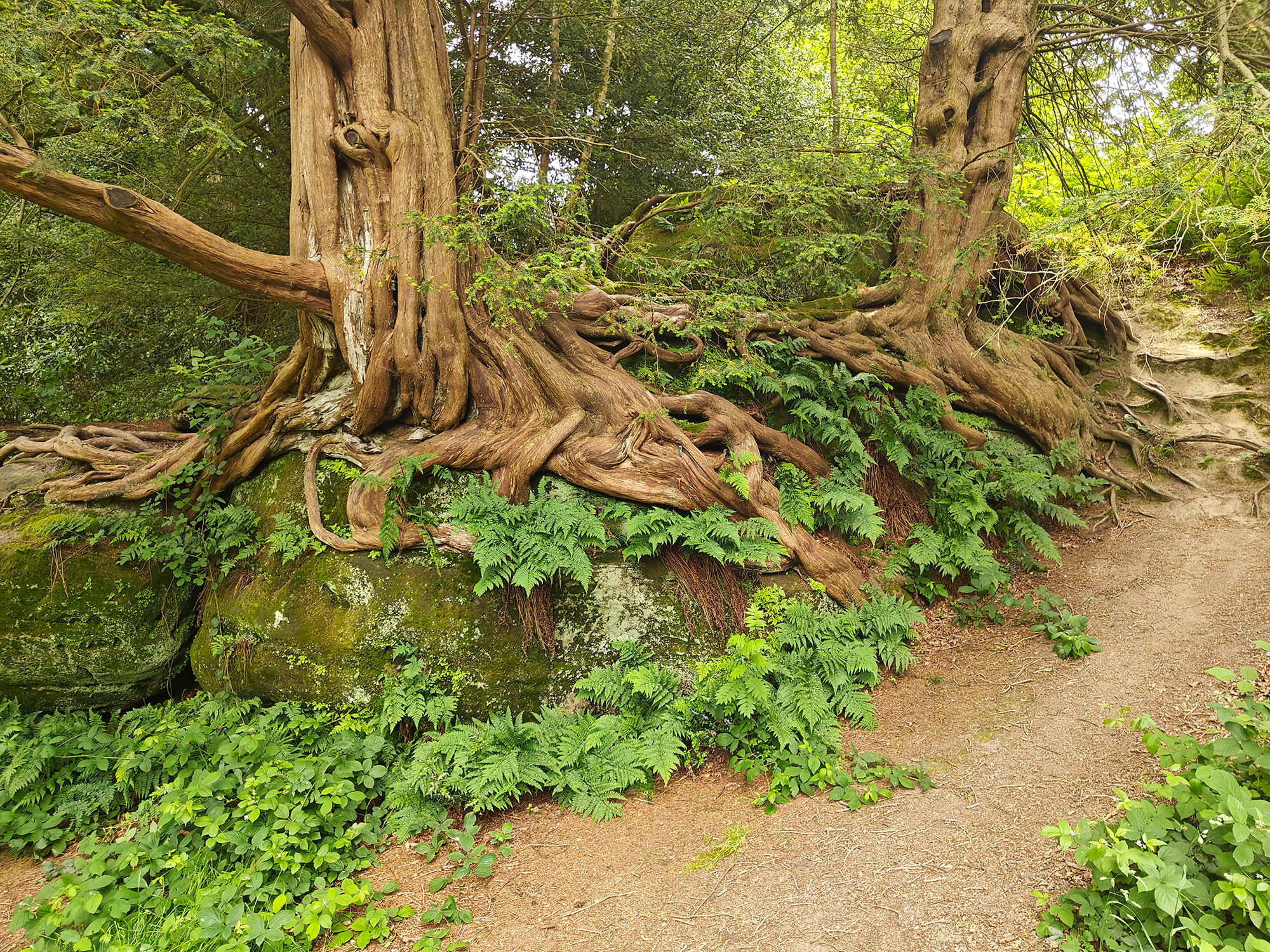


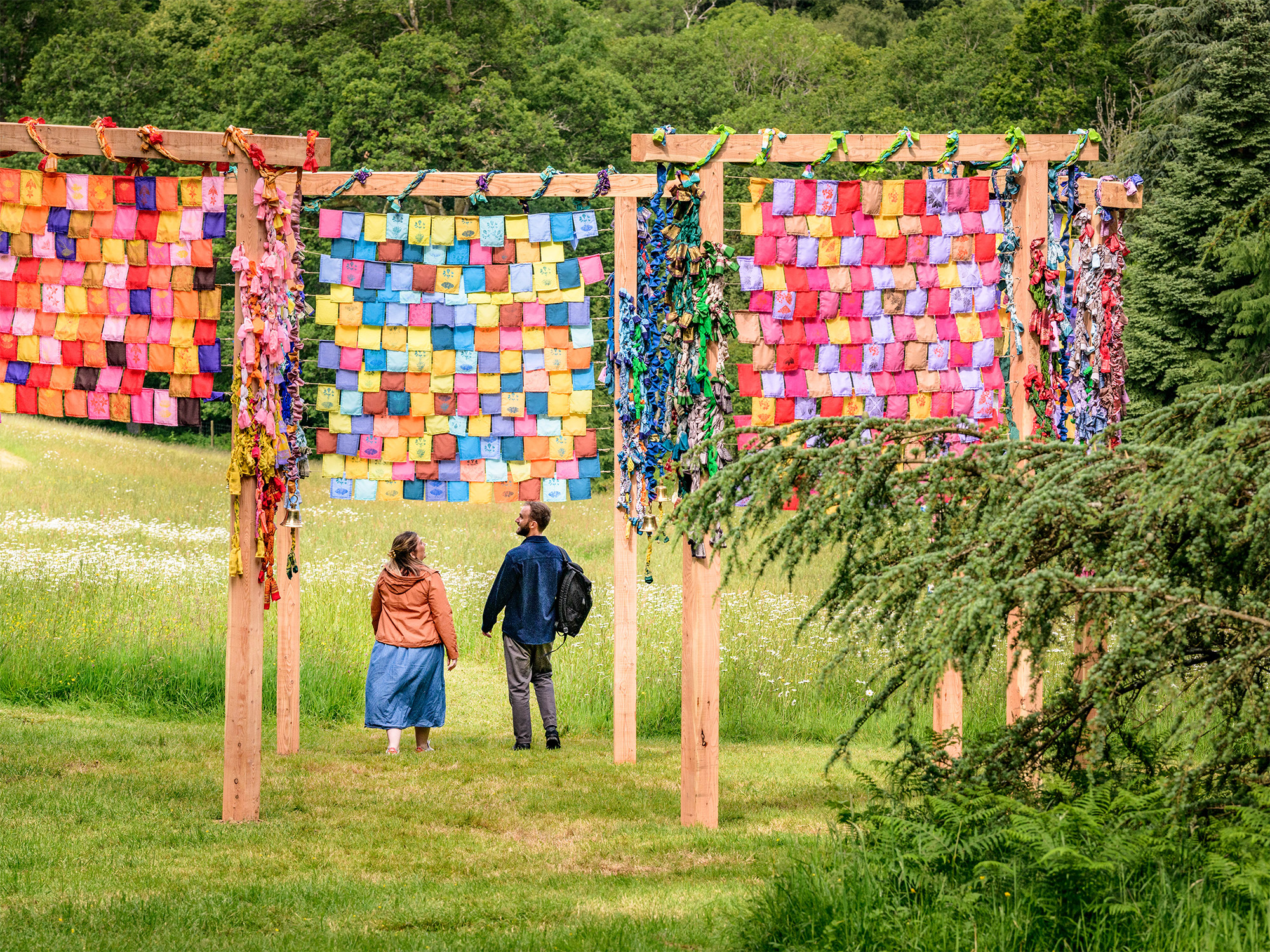
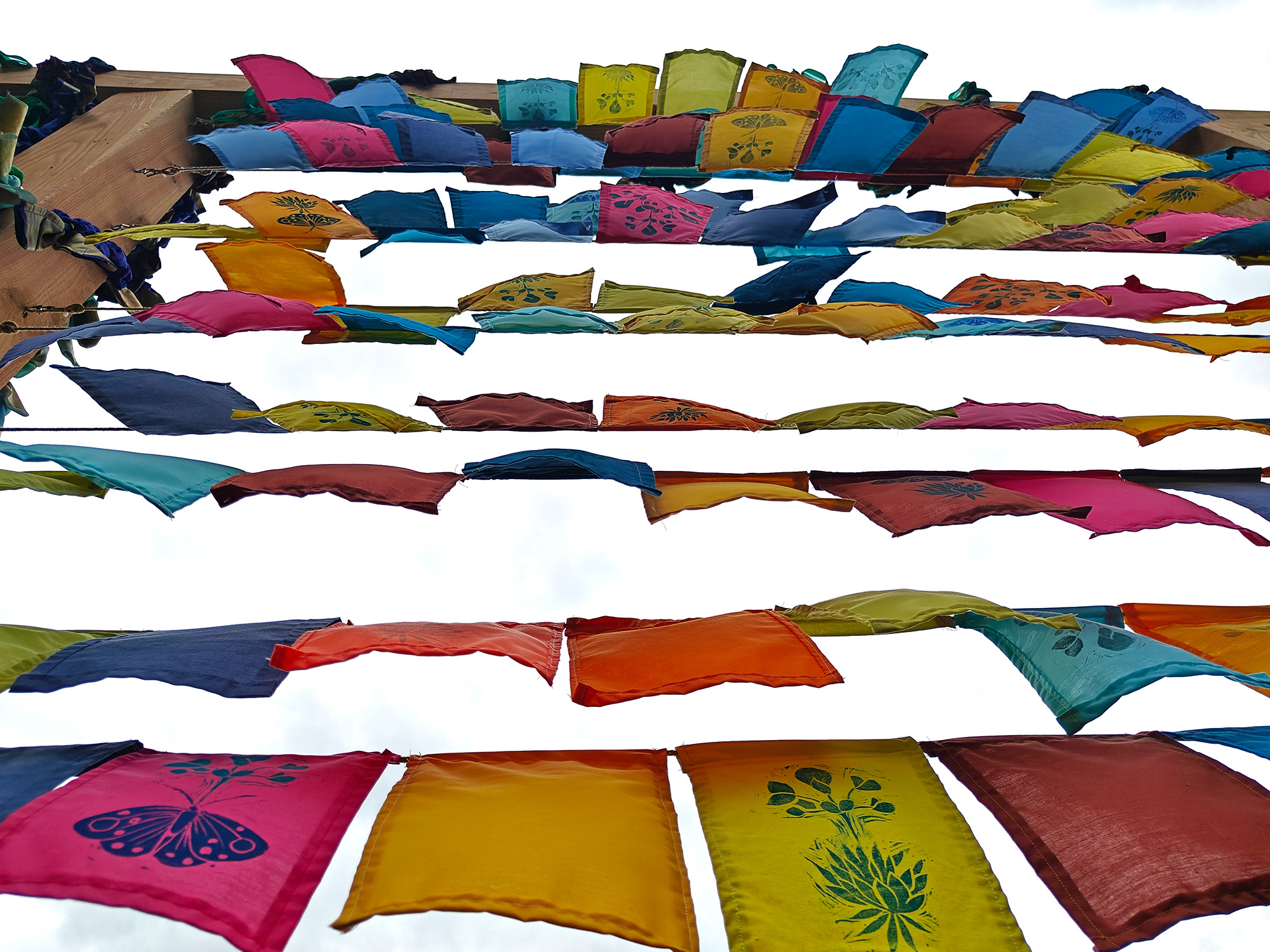
Figs.xxvi-xxix



Figs.xxx-xxxi
Meadowland
The Meadowland season at Wakehurst runs through until mid-September, and as well as including the art installations and actual meadows for human and non-human visitors, there are a series of meadow-themed events through the summer including evening twilight walks with music, art, and performances amongst the nature, and Meadow Bathing workshops based on the Japanese art of Shinrin-yoku.
Full details of the season and these events are available from Wakehurst’s website: www.kew.org/wakehurst/whats-on/meadowland
The Meadowland season at Wakehurst runs through until mid-September, and as well as including the art installations and actual meadows for human and non-human visitors, there are a series of meadow-themed events through the summer including evening twilight walks with music, art, and performances amongst the nature, and Meadow Bathing workshops based on the Japanese art of Shinrin-yoku.
Full details of the season and these events are available from Wakehurst’s website: www.kew.org/wakehurst/whats-on/meadowland


